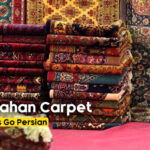
Isfahan Carpets
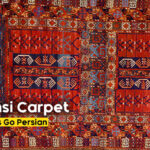
Onsi Carpet
Goat Hair Weaving: An Endangered Art
What do you know about “Mutabi” weaving? It is an art that the people of the Mofrad region in Meybod, Yazd, have preserved for centuries, passing it down from generation to generation.

But what is Mutabi? Mutabi (Goat Hair Weaving) involves spinning goat hair to produce ropes, bands, and thick fabrics used for tribal tents, setting up black tents, camel equipment, animal restraint, and more. In Mutabi, goat hair, dyed into white and black parts, is divided. The black strands are combed with a board called “Zika Board.” Once the combing is complete, the hair is twisted into threads and placed inside a ” Hambouneh bag.”
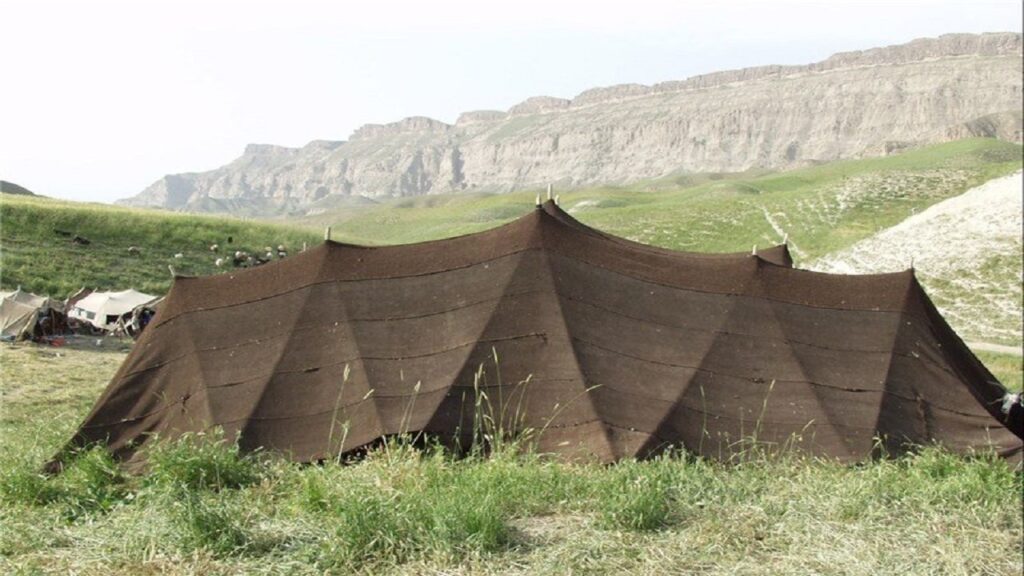
In the next stage, it’s time for Mutab. The Mutab man begins to spin the goat threads. A belt is tied to the wheel’s rope, and the Mutab’s waist and the goat hair are turned by pulling the cord. The belt connected to the Mutab’s core, secured by a piece of wood and a string to the wheel’s rope, forms a knot and, along with Mutab, pulls the wheel’s rope, setting the wheel in motion and the goat hair is twisted along with the Mutab’s hand.

The equipment, including the Zarneh catcher, lime for hair, Zika board, Chezhk mill, Sarakaj mill, Copy and Gargour, Pik Dook, Nakhegir, and Dook Board, are tools associated with the art industry of Mutabi.
When the goat hair is spun and woven, it is available for sale to the tribes. Describing this art industry, Mutabi is very compact and sturdy. It comes to life in the summer when the tent flaps open, allowing cool air in and facilitating proper air circulation. In winter, the tent flaps are closed to prevent the loss of interior tent warmth, and at the same time, they prevent rainwater from entering.
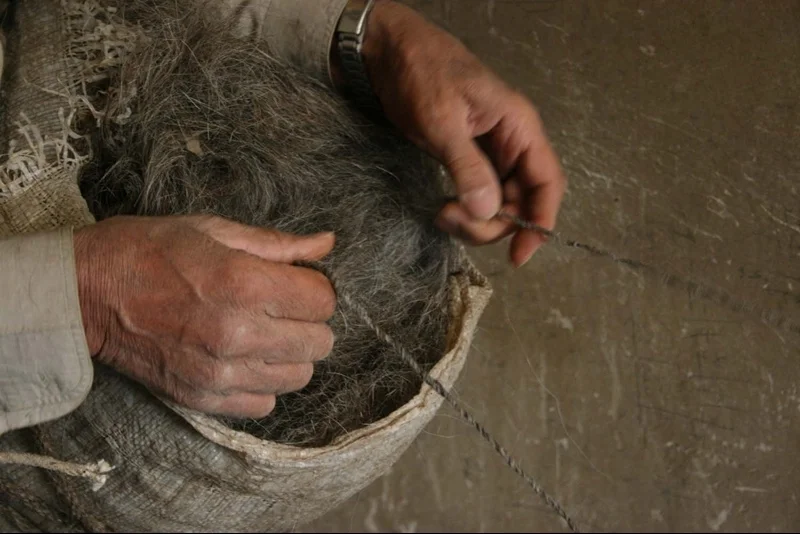
Mutabi handwoven products are now exported within the country to cities such as Zahedan, Shiraz, Kerman, Zahbal, Khosh, and Jiroft. Moreover, it has many customers from Pakistan and Arab tribes in the Persian Gulf region.
The history of Mutabi in Bafrooyeh Meybod dates back to ancient times, but an exact date cannot be determined. In the past, there was a kind of job distribution among different villages in Meybod. For example, Beshnighan was assigned to carpet weaving, Kuchak to agriculture, Firoozabad to Canvas Weaving and trade, Meybod Bala to pottery, Meybod Payin to gardening and vegetable selling, Mahmoodabad to plaiting and Bafrooyeh to Mutabi, which, due to its specificity, brought significant income to the locals and was considered one of the main occupations of most villagers.
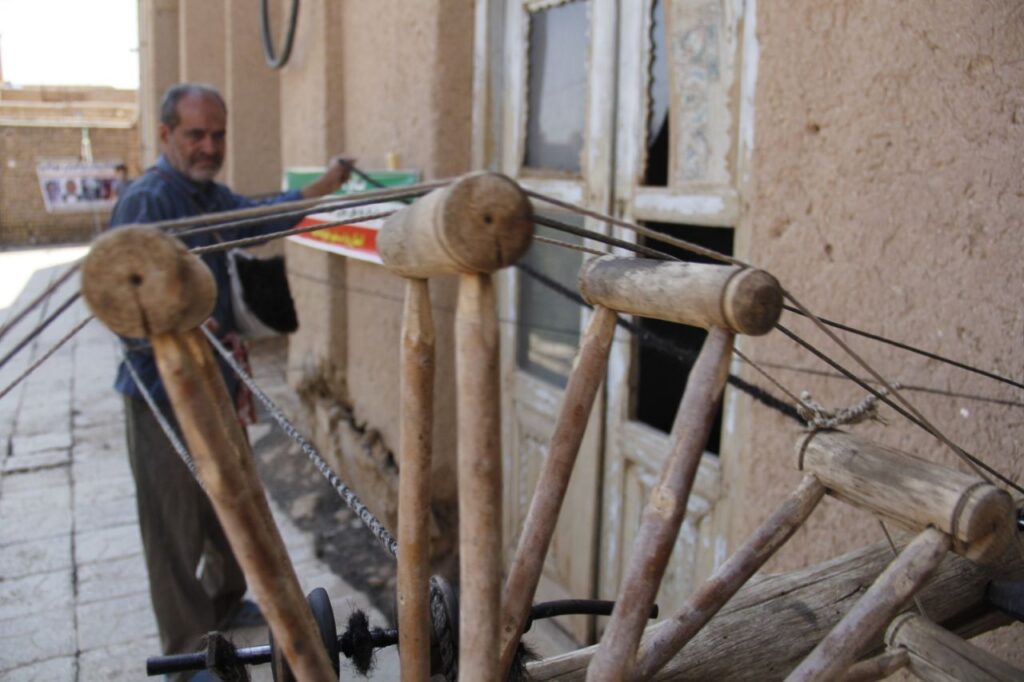
Ali Meybodi, one of the masters of this art industry, expresses concern about the problems of this profession, stating that most Mutabi masters have passed away, and except for a few, no one is engaged in this work. Mutabi is an art that is becoming obsolete because it is labor-intensive, and the new generation has no interest in learning it.
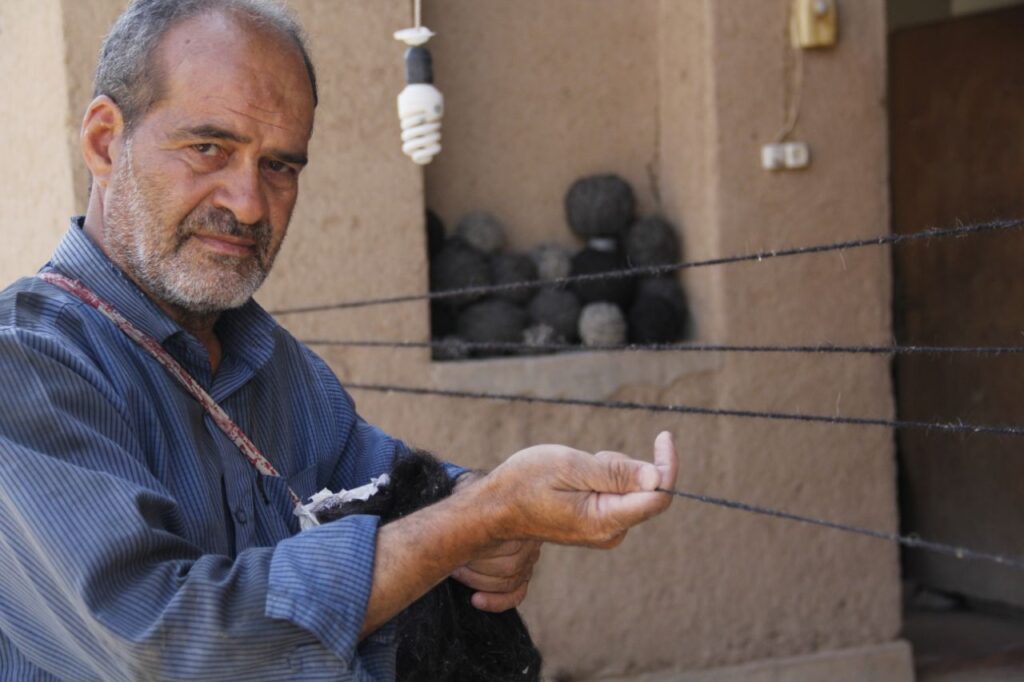
The wages paid for Mutabi are negligible compared to the effort put into it, and on the other hand, intermediaries make the main profit. That’s why no young person in Meybod and its surroundings has stepped forward to learn it.

The Mutabi art in Bafrooyeh is listed as number 1064 in the country’s intangible heritage list but is in danger of disappearing. If support is not provided, with the death of the last Mutabi survivors, this art will be forever consigned to history.



















